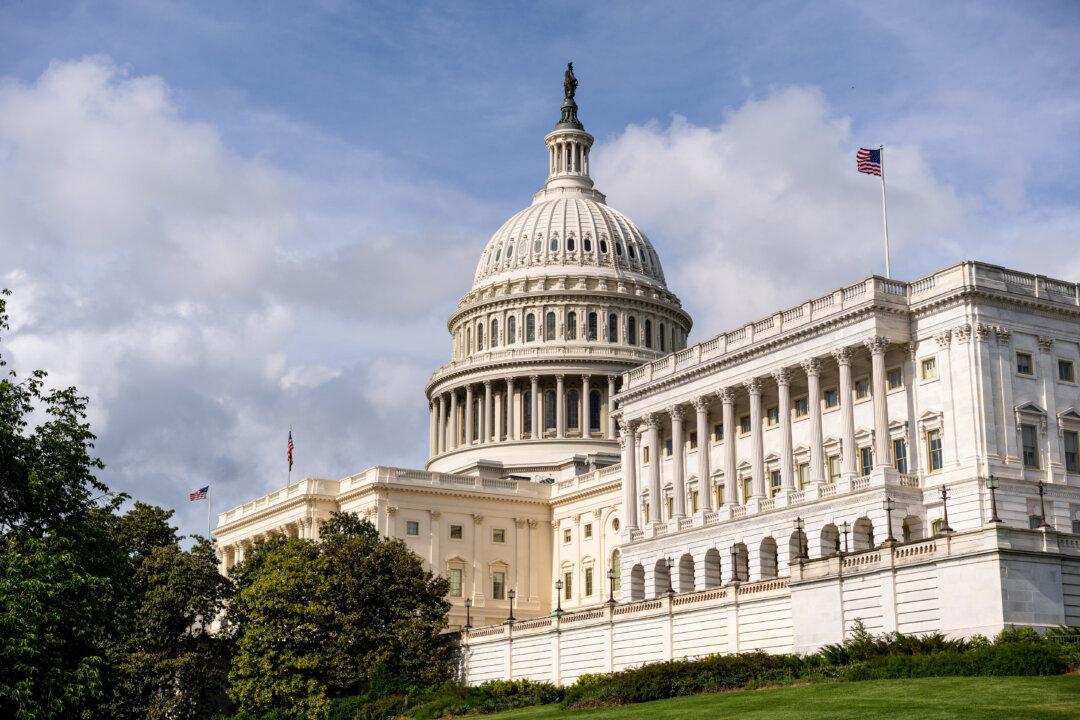U.S. Treasury yields took a breather after long-term interest rates surged midweek on intensifying debt concerns.
Yields on U.S. government bonds were in the red on May 22, with the benchmark 10-year yield dropping by 5 basis points, to about 4.547 percent. (One basis point is 1/100 of a percent.)
The 30-year Treasury yield dipped more than 2 basis points, to 5.065 percent. The long-term bond had been as high as 5.14 percent during the session, its highest level since October 2023, before erasing its gains.
At the end of the bond sale, the auction led to a high yield of 5.047 percent, sending U.S. stocks tanking in the middle of the trading week.
The next Treasury auctions will feature three notes: $69 billion of the two-year note (May 27), $70 billion of the five-year note (May 28), and $44 billion of the seven-year note (May 29).
Mounting concerns surrounding the federal government’s fiscal health have become the talk of Wall Street.
On May 16, Moody’s downgraded the United States’ long-term credit rating by one notch, citing the country’s national debt and interest payments.
Investors will also monitor the effect of President Donald Trump’s “One Big Beautiful Bill,” which the House advanced by a one-vote margin to the Senate on May 22. The Congressional Budget Office and the Joint Committee on Taxation estimate the legislation could add nearly $4 trillion to the deficit.
If projections are accurate, the bill will force the Treasury to inject more supply into capital markets, say UBS analysts.
Will yields hover around these levels, or could they venture higher?
According to Ipek Ozkardeskaya, a senior analyst at Swissquote Bank, Treasury yields could go “a lot higher.”
“Back in 1981, the 10-year yield stood above 15 percent, and the 30-year has been steadily declining from near 10 percent since 1987,” Ozkardeskaya said in a note emailed to The Epoch Times. “I don’t expect a return to those extremes, but a sustained move above 5 percent—especially if underpinned by structurally higher inflation—is definitely possible.”
Other markets, meanwhile, have also witnessed significant movements in long-term rates.
Growth, Inflation, Rates
Another development occurred in the U.S. Treasury market this week that could indicate market sentiment and economic expectations.The spread between the five-year and 30-year bonds widened to 1 percent for the first time since October 2021. It has gradually increased since reaching negative 0.36 percent in July 2023.
The last time the spread reached 1 percent, the annual inflation rate was above 6 percent, and the third-quarter gross domestic product (GDP) growth rate was 3.5 percent.

When the spread widens, it typically signals that investors project solid growth, higher inflation, and that the Federal Reserve will keep interest rates higher for longer. A narrower spread can suggest investors penciling in slower growth and shifting monetary policy.
Over the past few months, economists have been forecasting lower growth prospects and rising inflation, though these predictions have been adjusted amid the Trump administration’s softening trade stance.
BNP Paribas economists, for example, anticipate the average annual inflation rate will reach 4 percent by the second quarter of 2026, up from the current headline rate of 2.3 percent.
On the GDP front, they forecast that the year’s average annual growth rate will be 1.3 percent.
Goldman Sachs economists anticipate that the Fed will pursue a slower pace of rate cuts but will initiate “a series of three 25-basis-point cuts in December rather than in July.”
The FOMC will hold its next two-day meeting on June 17–18.







